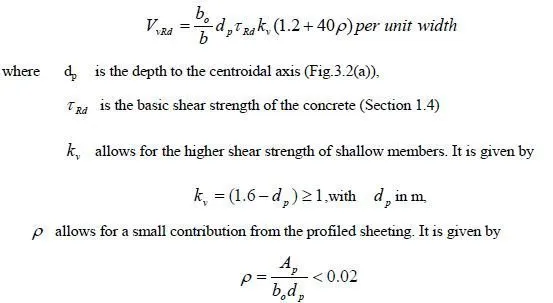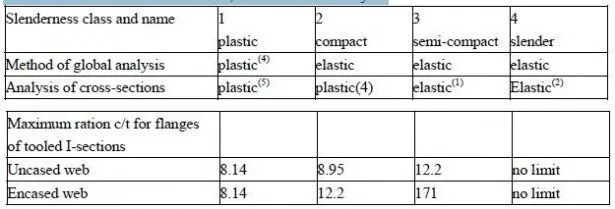Tests show that resistance to vertical shear is provided mainly by the concrete ribs. For open profiles, their effective width bo should be taken as the mean width, though the width at the centroidal axis (Fig3.2(a)) is accurate enough. For re-entrant profiles, the minimum width should be used.
Design methods are based on those in reinforced concrete T-beams. In Eurocode 4, the resistance of a composite slab with ribs of effective width bo at spacing b is given as
where Ap is the effective area of sheeting in tension within the width bo, which can usually be taken as the total area within that width.
In reality, the shear stress in the side walls of the steel troughs may be quite high during the construction phase. This can be ignored when checking the composite slab, and Vsd should be taken as the whole of the vertical shear, including that initially resisted by the sheeting.
Resistance to vertical shear is most likely to be critical in design where span/depth ration are low, as is the case for beams



